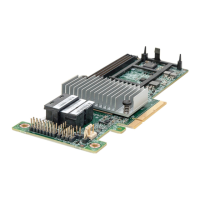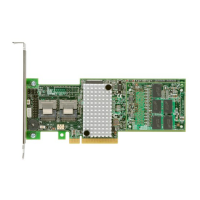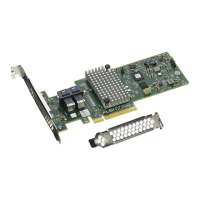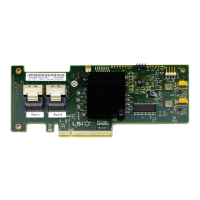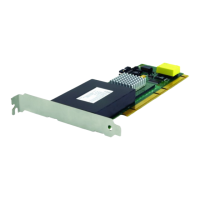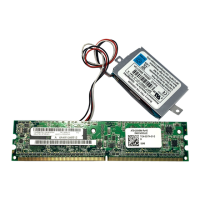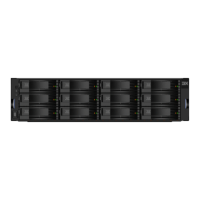Configuration Scenarios 1-5
failure. You can select the data backup method that best suits your
needs. A hardware RAID assist exclusive-OR (XOR) engine speeds
parity generation and checking and reduces system-access times.
The controller supports the SAS protocol as described in the Serial
Attached SCSI Standard, version 2.0. In addition, it supports the Serial
ATA II (SATA II) protocol defined by the Serial ATA Specification, Version
1.0a, and the Serial ATA II; Extension to the Serial ATA Specification,
Version 1.1. SATA II is an extension to SATA 1.0a. The controller
supports the following SATA II features:
•
3 Gb/s SATA II
•
Staggered spin-up
•
Hot plug
•
Native command queuing
•
Activity and fault indicators for each PHY
•
Port Selector (for dual-port drives)
Each port on the ServeRAID M5015 controller supports SAS devices,
SATA II devices, or both using SSP, SMP, STP, and SATA II. SSP
enables communication with other SAS devices. SATA II enables the
controller to communicate with other SATA II devices.
1.4 Configuration Scenarios
There are two main scenarios in which you can use these ServeRAID
controllers:
•
Low-end, internal SATA II configuration: In this configuration, use
the ServeRAID controller as a high-end SATA II compatible controller
that connects up to eight disks. This configuration is mostly for low-
end or entry servers. Enclosure management is provided through
out-of-band I
2
C bus. Side bands of both types of internal SAS
connectors support the SFF-8485 (SGPIO) interface.
•
Midrange, internal SAS configuration: This is like the internal
SATA II configuration, but with high-end disks. This is more suitable
for low-range to midrange servers.
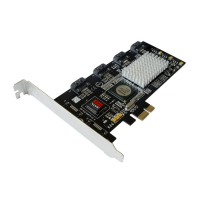
